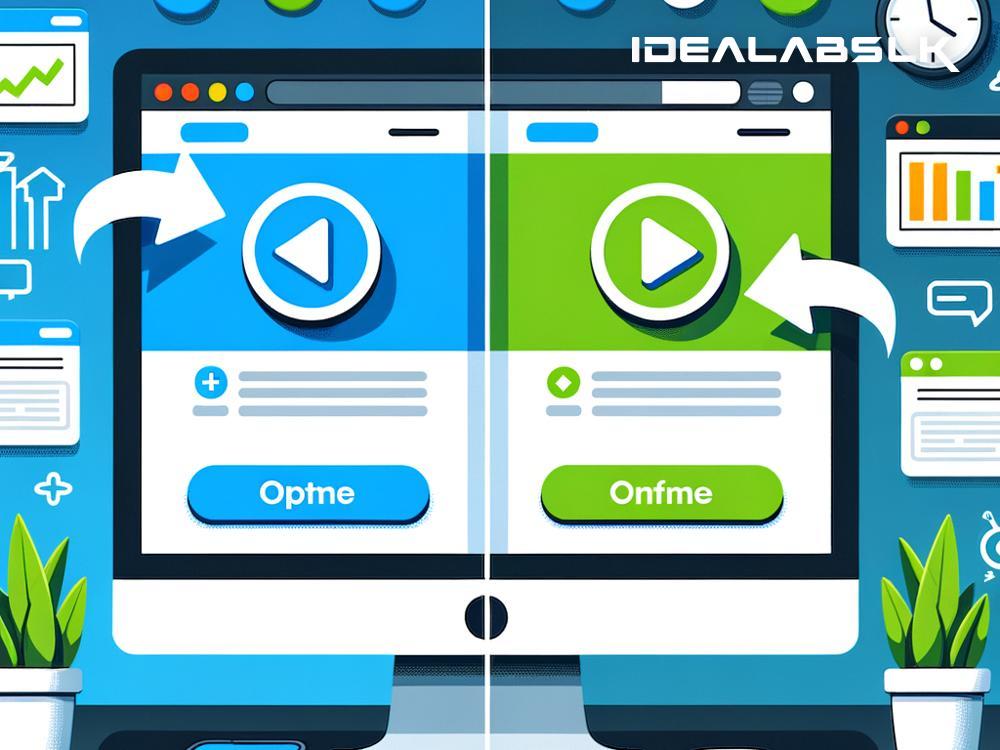How to Conduct A/B Testing: A Step-by-Step Guide
Imagine you're the chef in a new restaurant. Before finalizing the menu, you decide to test out two versions of a dish to see which one the customers like more. This, in essence, is what A/B testing is all about, but instead of dishes, you're testing different versions of a product or a web page.
A/B testing, or split testing, is a fantastically straightforward way to compare two versions of something to figure out which performs better. It’s like conducting a science experiment for your website, app, or basically anything. Whether you're looking to increase website traffic, improve user engagement, or boost sales, A/B testing can help you make decisions based on actual data, not just gut feelings.
So, how do you conduct an A/B test? Let's break it down into simple steps:
1. Set Your Goal
The first step is knowing what you want. It's like going on a road trip; you need to know your destination. Are you aiming to increase newsletter signups, reduce webpage bounce rates, or something else? Clearly defining your goal will guide the entire testing process.
2. Choose What to Test
Once you know your goal, decide what you will test to achieve it. It could be anything from the color of a button, the placement of a signup form, to the subject line of an email. Remember, you're the chef deciding whether to use basil or oregano in your dish.
3. Create Your Variants
Now, create two versions: the original (A) and the modified version (B). Try to change only one element between the two versions to know precisely what influenced the outcome. If you're testing the button color on your website, version A would have the original color, and version B would have a new color.
4. Split Your Audience
It's time to serve your dishes to the crowd, but fairly. Divide your audience randomly into two groups: one will see version A, and the other will see version B. This way, each group's experience is only influenced by the version they interact with, keeping the test fair.
5. Run the Test
Let the tasting begin! Allow your test to run for enough time to get significant results. This might be a few days, weeks, or even months, depending on your website's traffic and the specifics of what you're testing.
6. Analyze the Results
After collecting enough data, it's time to crunch the numbers. Analyze the results by comparing the performance of version A against version B. There are various tools online that can help you with this, simplifying the process of determining which version achieved better results towards your goal.
7. Implement Changes
If version B outperformed version A, congrats, you’ve found a new recipe for success! Implement the changes based on the winning variant. If there wasn’t a clear winner, don’t worry, every test gives you insights. You might need to refine your hypothesis and test again.
8. Keep Testing
Your menu can always be improved. A/B testing is not a one-time affair but a continuous process of iteration and optimization. Keep testing various elements based on the insights gained from previous tests.
Tips for Successful A/B Testing
- Start Small: Don’t overhaul your entire webpage in one go. Start with small, incremental changes.
- Be Patient: Give your test enough time to yield meaningful results. Acting too hastily might give you misleading data.
- Use the Right Tools: Tools like Google Optimize, Optimizely, or Unbounce can make setting up and analyzing your A/B tests much easier.
- Stay Focused: Always test with a clear goal in mind. More data is not always better if it’s not relevant to your objective.
A/B testing might sound like it's only for the tech-savvy, but it's genuinely for anyone curious enough to ask, "Can this be better?" By following these simple steps, you embrace a data-driven approach to decision-making, allowing you to fine-tune aspects of your product, service, or website based on what actually resonates with your audience.
Start small, keep learning, and soon you'll be conducting A/B tests like a pro, ensuring everything on your metaphorical menu is as delightful as it can be.

